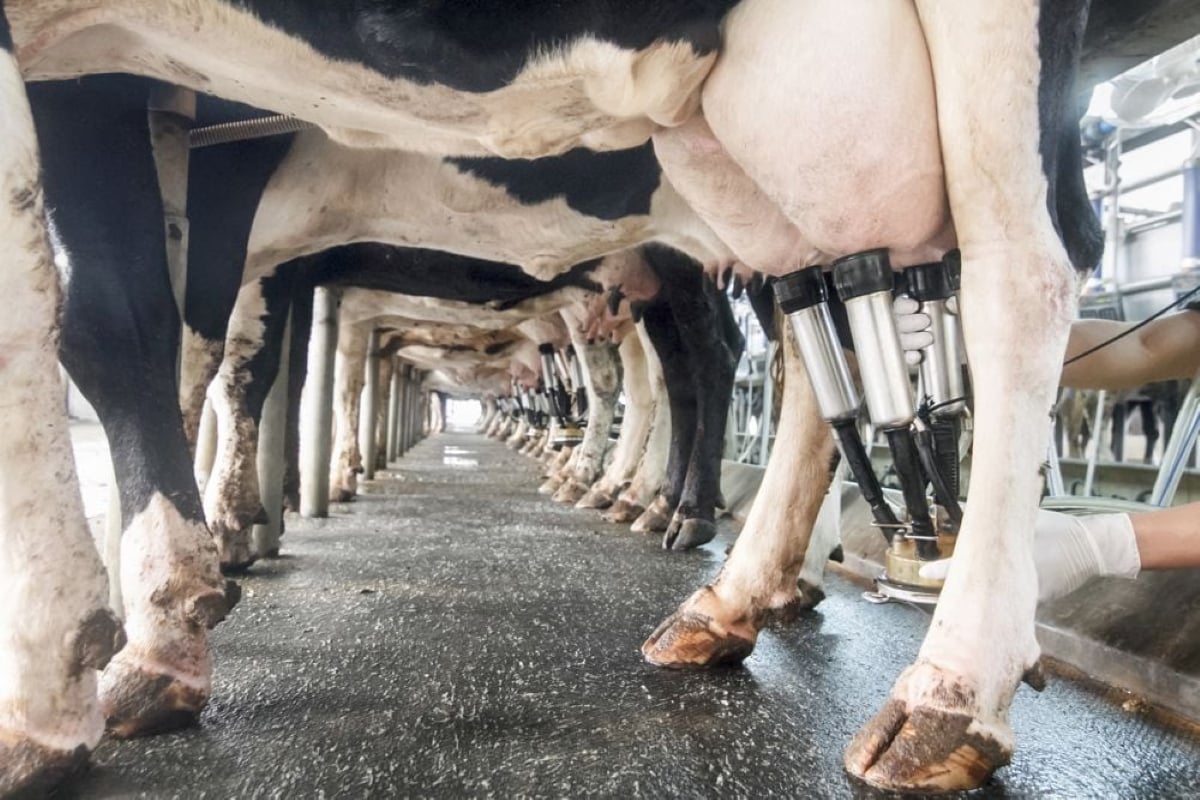A paper published in the Lancet has established that chickens are one source of a deadly strain of bird flu that has killed 23 people in China.
The study leader, Kwok-Yung Yuen of the University of Hong Kong, confirmed that chickens in poultry markets have caused human infections of the H7N9 virus, according to Reuters.
The finding means that Chinese officials may need to close live poultry markets to prevent further animal to human transmission, which would reduce the risk of an avian influenza pandemic.
Read Also

Farm gate milk price to rise in 2026
The Canadian Dairy Commission will raise its farm gate milk price by 2.3255 per cent in February, the Crown corporation announced on Friday.
“The evidence … suggests it is a pure poultry-to-human transmission and that controlling (infections in people) will therefore depend on controlling the epidemic in poultry,” Kwok-Yung Yuen told Reuters.
The virus has infected 109 people in China and caused the death of a Taiwanese man who was working in China. The World Health Organization has described H7N9 as highly lethal compared to other influenza strains.
Canadian chicken industry representatives say the risk to Canada’s domestic bird flock remains low.
“We’re working closely with them (the Canadian Food Inspection Agency) to monitor the situation. Most of what we’re working around is proactive, preventive procedures at the farm level in order to mitigate as much risk as possible,” said Michael Edmonds, a Chicken Farmers of Ontario spokesperson.
“We are confident that biosecurity procedures on the farm level provide a preventive reassurance that mitigates as much risk as possible.”
A different strain of avian influenza infected a turkey barn north of Winnipeg in 2010. It was suspected, but never confirmed, that a wild bird transmitted the virus to the turkeys.
A repeat of that scenario is unlikely with H7N9, said Wayne Hiltz, general manager of Manitoba Chicken Producers.
“Specific to what’s happening in some wild and domestic birds in Asia, that’s not a migratory (bird) pattern, so the chances of that (disease) coming here is low.”
The poultry industry responded to previous outbreaks in Canada by bolstering its biosecurity protocols.
“We have a good biosecurity program … and a good emergency response that kicks in when there is an issue that we deem is a risk,” Edmonds said.
“We have everything in place today that we didn’t have in place 10 years ago…. The level we’re at today, on a day to day basis, is so much more enhanced.”
In March, Agriculture Canada recognized Chicken Farmers of Canada for successfully implementing food safety programs. It is the first national organization to receive this recognition.
As well, Chicken Farmers of Ontario, Egg Farmers of Ontario, the Ontario Broiler Hatching Egg and Chicken Commission and Turkey Farmers of Ontario created the Feather Board Command Centre to respond to outbreaks of highly contagious diseases such as avian influenza.
The CFIA recently sent out a notice reminding producers to follow biosecurity protocols such as keeping poultry away from wild birds and controlling the movement of people, animals and equipment on the farm.
It said Canada doesn’t import raw poultry products or live birds from China.
Hiltz said it’s possible that someone could transport birds or poultry products into the country illegally, but such activity is beyond the scope or control of Canada’s poultry industry.
The Public Health Agency of Canada hasn’t posted travel restrictions because of H7N9, but it is telling Canadians to avoid high risk areas like poultry farms and animal markets.
The National Microbiology Lab in Winnipeg has obtained a sample of the H7N9 virus. Researchers want to know if antiviral drugs or vaccines are effective against the virus.













